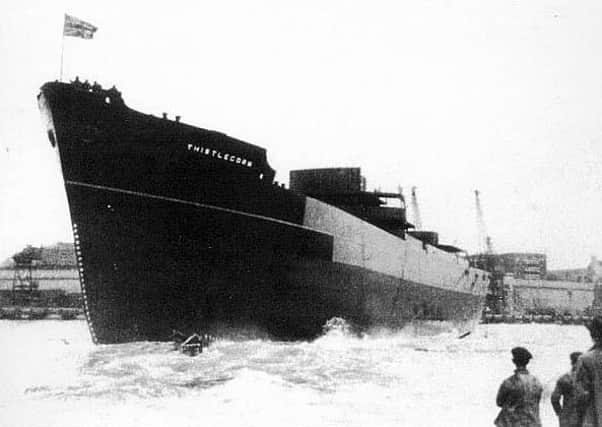ON THE WATERFRONT: What became of city steamer bombed by the Germans?


Launched on April 9, 1940 by JL Thompson and Sons Ltd, she was one of the town’s well-known Albyn Line fleet.
Bound for Alexandria on Egypt’s Mediterranean coast, the 4,898 gross tons steamer left Glasgow on June 2, 1941 to commence her fourth and what would be her final voyage. Loaded with munitions and supplies for the British army’s Libyan campaign, her cargo included weapons, shells, land mines, ammunition, trucks, motorcycles, trailers, radios, rubber boots, aircraft and vehicle spare parts. Two railway locomotives were even fastened to her deck. With Axis forces preventing allied shipping from navigating through the Mediterranean via the Strait of Gibraltar, Thistlegorm was required to detour via Cape Town, South Africa, to reach the Suez Canal. After taking on bunkers at Cape Town, she sailed up Africa’s east coast and entered the Red Sea, before arriving in the Gulf of Suez in September to await orders to approach the canal.
Advertisement
Hide AdAdvertisement
Hide AdAt 2am on October 6, disaster struck as a German Heinkel He 111 aircraft, on an armed reconnaissance mission, spotted the freighter below. Two well-aimed bombs set her ablaze and within ten minutes she had blown up and sunk. Nine crew members died, with survivors being picked up by the Royal Navy’s light cruiser, HMS Carlisle. Today, both wreck and freight remain remarkably intact, considering the manner of their loss and that souvenir-hunting divers have plundered its cargo.
Thistlegorm was one of four Albyn Line ships lost at sea during World War Two; the others being the Thistlebrae, Thistleglen and Thistlegarth.
Established in 1901, under the directorship of William Allan (chairman), William Black and Walter Beattie Allan (Snr), the company went into voluntary liquidation in 1966. In doing so Sunderland lost the last in a long line of tramp shipping companies associated with the town.
The photograph shows Thistlegorm shortly after being launched into the Wear in 1940.